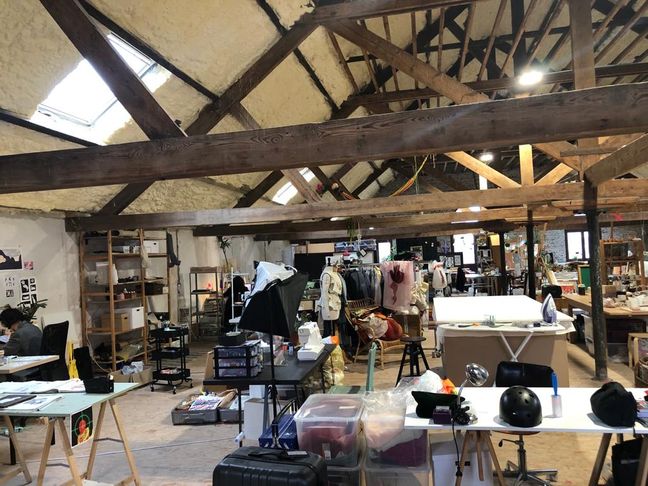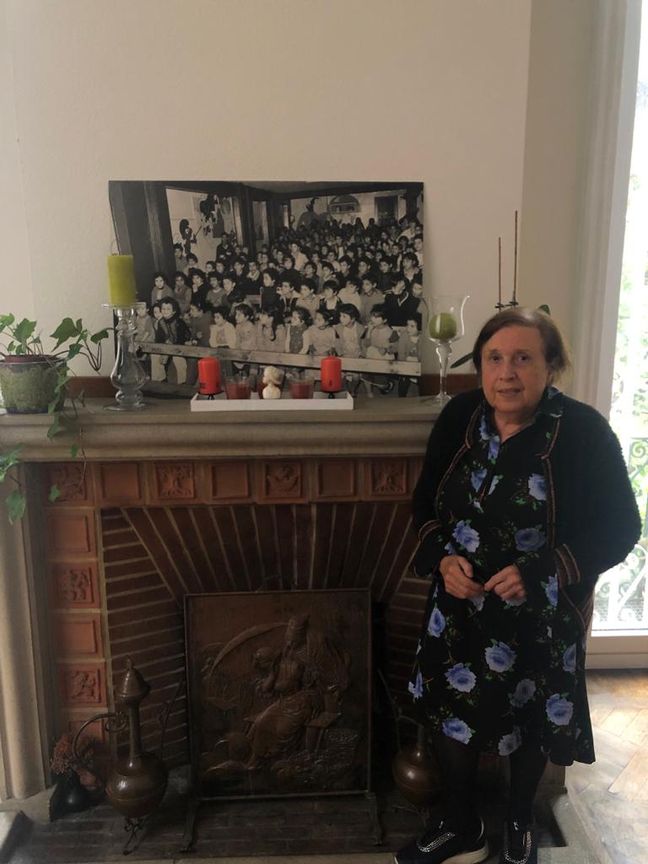From our special correspondent in Molenbeek (Belgium),
Jeans, hoodie, T-shirt with the “Google” logo… When Ibrahim Ouassari arrives in the hall of the building, the 44-year-old man looks like a Tech boss. With a smile from ear to ear, he takes us on a tour of his digital school, founded in 2015. Rest rooms with flashy sofas, a family kitchen that serves as a cafeteria, open spaces filled with MacBooks, we could believe in the heart of Silicon Valley.
The illusion is almost perfect but we are fine Molenbeek, one of the thirteen municipalities of Brussels. It is there, place de la Minoterie, that Ibrahim Ouassari has taken up residence – more precisely the premises of his former primary school. Each year, nearly 250 students from the region push the doors of MolenGeek to train for free in coding or digital marketing. And the man is quite proud: “Molenbeek is a bit like Brooklyn in New York, it has become the place to be “, he explains.
Just look across the square to understand. A tall, Manchester-like red brick building rises over several floors. This former 19th century flour factory was renovated a few years ago. Now it houses social housing, a theater and a bicycle repair shop. On the other side, the building directly overlooks the Quai des Charbonnages. Along the Brussels canal, the town hall has set up kilometers of Amsterdam-style cycle paths. And in rue Darimon, which leads to MolenGeek, the small colorful individual houses seem straight out of London. Seven years after the attacks of November 13, 2015 in Paris, we are far from the image portrayed by the media. Having become sadly famous for having seen the birth of – or hosted – the terrorists of the jihadist cell responsible for the attacks in Paris and Brussels, the town offers another face: that of a multicultural city, which attracts more and more companies, young professionals and artists.
A cultural nursery
Returning to the canal, you have to walk about ten minutes before coming across The White Bee. Wedged between a garage and a wedding equipment company, this 500 m² concrete shed, a former margarine factory, is home to a “multidisciplinary and inclusive artistic hive”. On three floors are divided exhibition rooms, artists’ studios and tattoo parlour. “The goal is to promote young artists,” explains Jonathan and Marcus, the two founders. “When we settled here, we were told ‘You’re not going to do that in Molenbeek, it’s dangerous'”.

A year after the opening of the artistic space, the two young men have no regrets. “In ten years, Molenbeek has changed completely. The city has become a veritable cultural hotbed with museums, artists’ studios and collaborative spaces. There are a lot of things that are being done,” explains Jonathan, an architect by training.

And Jonathan and Marcus aren’t the only ones. In 2016, it is the Millennium Iconoclast Museum of Art – the MIMA –, a museum of urban art and culture 2.0, which opened its doors in an old brewery, a few meters away. Moving away from the canal, we find a former sugar factory transformed into a choreographic centre, La Raffinerie. Then you have to go back to MolenGeek to come across L’Epicerie, an educational, cultural and civic center that hosts a theater troupe, a feminist association and young companies. The former industrial laundry has been rehabilitated in a third location, LaVallée. Since 2014, artists, entrepreneurs and artisans have shared 6,000 m² of offices, workshops and showrooms. We could continue the list for a long time.
Gentrification of the city
If Molenbeek is attracting more and more people, especially artists, it is also because the property prices there are very attractive. With 350,000 euros on average for a house, the municipality is one of the cheapest in the Brussels region, according to the Belgian statistics office. What attract young workers who want to settle near the city center. Because all you have to do is cross the Brussels canal and walk about fifteen minutes – or in just three metro stops – to reach the heart of Brussels. In the neighboring municipalities of Ixelles or Etterbeek, you have to spend almost twice as much to afford accommodation. “The population has really evolved in ten years. Those who arrive are people from the upper middle classes, in their thirties, young workers with young children, mainly Flemings,” explains Ibrahim Ouassari. As a result, in Molenbeek, the population exploded. It went from 88,000 inhabitants in the 2010s to nearly 98,000 at the last census.
With this “gentrification”, as the entrepreneur puts it, “trendy” places have sprouted like mushrooms. In addition to artistic venues, there are now coworking spaces, such as Le Phare du Kanaal, organic shops and vintage bicycle shops. The other side of the coin is that the arrival of this new, more affluent population has increased the costs. In 2021 alone, houses increased by 9% in Molenbeek, according to the Royal Federation of Belgian Notaries (FRNB). “It remains accessible, but the increase is incredible. My fear now is that more modest people will no longer be able to find accommodation,” worries Ibrahim Ouassouri.
“The laboratory of the future”
For the founder of MolenGeek, the arrival of this new population is also proof of a developing multiculturalism. Because in Molenbeek, more a quarter of the population is of foreign nationality – with a large Moroccan community -. And for many of them, the Foyer, rue des Archives, acts as a second home. A pioneer in helping people of foreign origin integrate into Brussels, the structure organises, among other things, tutoring and language courses, outings and support services. Every year, 250 people – mostly women and young people – are welcomed by Loredana Marchi, in this large three-storey house that has become a center for diversity and inclusion.

From the height of her 70 years, Loredana Marchi knows the problems of the city by heart, which she has seen evolve and gentrify little by little. And the dean of the household warns of the risk of a social divide between “the two Molenbeeks, the historic Molenbeek, more popular, and the new, more bobo”. “If we talk about inclusive diversity, we have to make sure that there are places where people can meet,” warns this historic figure of the city. There is still a little way to go to speak of a “multicultural city”, believes the septuagenarian, but she is confident: “Molenbeek is the laboratory of the future for education, culture, social ties and diversity. We have all the problems, but we also have all the solutions.